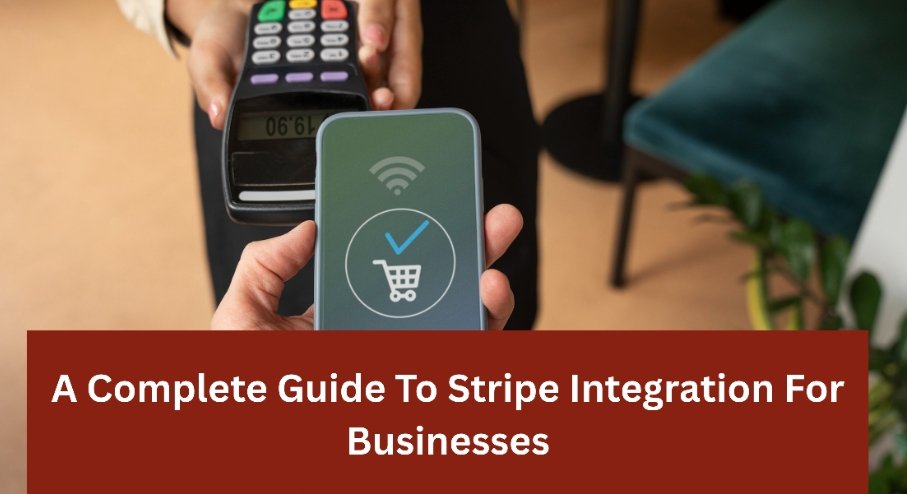Business
A Complete Guide To Stripe Integration For Businesses

These days, online payments are at the heart of how businesses run. Whether you’re selling physical products, offering subscription-based services, or managing high volumes of transactions, customers expect the process to be fast, secure, and effortless.
Thus, picking the right payment platform can make a real difference. It can smooth out your day-to-day operations, remove unnecessary friction, and open doors to international markets.
Considering that, Stripe has made itself a reputable payment provider that is reliable across a broad spectrum of businesses, from small online shops to established ones. Its developer-friendly tools, large global reach, and flexibility for implementation make it the best option for everything from small online businesses to long-established companies.
When businesses take the time to implement it, Stripe has the ability to provide them with a stable payment platform that grows with them.
This article discusses Stripe integration in detail.

Getting Familiar with Stripe and Its Essential Features
Stripe integration is not simply accepting payments. It is about creating a solid financial infrastructure that supports your whole business.
Stripe is designed to facilitate a wide range of requirements. It supports payment processing, invoicing, recurring billing, fraud security, and financial reporting—all on a secure, scalable infrastructure that can handle growth without breaking a sweat.
What sets Stripe apart from many of the other gateways is that it is developer-oriented. It has great documentation, well-crafted APIs, and pre-built UI components that simplify the integration. And it supports multiple payments and currencies, allowing you to accept customers worldwide.
For businesses that are looking to compete worldwide, this ease of flexibility is a big advantage.
Key Things to Consider Before Integrating Stripe
Before jumping into the technical side, it’s important to plan strategically.
- Start by checking whether Stripe operates in your country or region. Although its network is expanding quickly, there are still some places where it’s not yet available. You’ll also need to be aware of any local regulations, such as Know Your Customer (KYC) rules or tax laws that apply to your business.
- A second vital step is finding out about Stripe’s pricing. Charges and currency conversion fees are different, and knowing the cost in advance will help you price your products suitably so that you are not surprised afterwards.
- Finally, think seriously about how you would like to integrate Stripe. Some companies utilize Stripe-hosted checkout pages for simplicity and quickness. Others employ full API integrations so that they can completely control the payment process. Your decision will likely depend on your company’s technical capabilities, security issues, and the complexity level of your payment flows.

Setting Up Your Stripe Account
Signing up for a Stripe account is quite straightforward. You’ll provide your business information, verify your identity, and connect your payout bank account. Once approved, you’ll have access to the Stripe dashboard — your one-stop shop where you’ll be able to manage everything.
Here you can set up API keys, add webhooks, and configure team permissions. Stripe’s test mode is a godsend here. You can test realistic transactions in a secure environment and catch issues before going live. Testing extensively now prevents future time wasting and customer hassles.
Choosing the Right Integration Methodology
Stripe offers you several alternatives to tap into its infrastructure. Stripe Checkout is a hosted, secure payment page that’s easy to integrate and fully compliant out of the box. It’s ideal for businesses needing an easy, reliable solution without hosting payment forms themselves.
If you want more control over the checkout experience, Stripe Elements allows you to add customizable UI elements natively to your site or app. It’s a bit more effort to build, but it provides a smooth, branded customer experience.
For more complex setups, Stripe’s APIs give developers the flexibility to automate billing, build subscription systems, or even create marketplace-style platforms. And if you’re using platforms like Shopify or WordPress, Stripe plugins make integration much easier without starting from scratch.
Step-by-Step Integration Guide
After selecting your method, the integration itself typically consists of both frontend and backend development.
On the frontend side, the Stripe libraries or elements are used by the developers to securely capture the payment information. This is tokenized such that the sensitive information never goes through your servers.
On the backend, your system trades these tokens with Stripe’s API to form charges or payment intents. This infrastructure offers both agility and robust security. Processing webhooks is another essential step, enabling your system to respond automatically to events such as successful payment, refunds, or disputes.
If your business is subscription-oriented, Stripe supports trials, upgrades, and recurring payments out of the box. Thorough testing in Stripe’s sandbox will have you confident that things will go as planned. Having good error handling and logging in place will enable you to catch issues on day one.

Advanced Features and Best Practices
Stripe is far more than a mere transaction. Stripe includes features to help with being compliant with regulatory requirements like Strong Customer Authentication (SCA) and 3D Secure, which are crucial in specific markets. Stripe Radar, its fraud protection feature, uses machine learning to identify and block suspicious activity in advance.
For companies that sell globally, multi-currency support is a valuable feature. Automatic conversions can be made possible through Stripe to make it easy for international customers. With time, as your company expands, staying updated with Stripe’s regular API release ensures you are on the safest, most feature-rich version. You can also create alert features and monitoring tools to give you better visibility into your transactions and catch problems before they arise.
Region-Specific Examples and Adaptations
Stripe’s global reach allows each region to impose its own rules and quirks. Canadian companies, for example, have to adhere to Bank of Canada rules on recurring payments. Other countries may require additional identity checks or limit certain types of cross-border transactions.
By knowing these local differences in advance, businesses can avoid delays and design payment systems that harmonize with local cultures. Offering locally preferred payment terms can also increase conversion rates and customer trust.
Migrating and Keeping Your Integration
If you’re moving from another payment system to Stripe, careful planning is essential. Customer data, subscription records, and billing histories need to migrate smoothly to avoid disruptions. Fortunately, Stripe provides documentation and tools to support this process.

Once you’re up and running, ongoing maintenance keeps everything secure and efficient. Monitoring fees, adopting new features, and staying compliant with changing regulations will keep your integration strong well into the future.
Conclusion
A strong payment strategy doesn’t just keep the cash flowing—it builds trust, opens new opportunities, and sets the stage for sustainable growth.
By approaching Stripe integration thoughtfully, businesses can create payment experiences that work reliably behind the scenes while making things easier for customers. Whether you’re launching a new venture or refining a global operation, investing in a smart integration today can pay off for years to come.
-

 Celebrity1 year ago
Celebrity1 year agoWho Is Jennifer Rauchet?: All You Need To Know About Pete Hegseth’s Wife
-

 Celebrity1 year ago
Celebrity1 year agoWho Is Mindy Jennings?: All You Need To Know About Ken Jennings Wife
-

 Celebrity1 year ago
Celebrity1 year agoWho Is Enrica Cenzatti?: The Untold Story of Andrea Bocelli’s Ex-Wife
-

 Celebrity1 year ago
Celebrity1 year agoWho Is Klarissa Munz: The Untold Story of Freddie Highmore’s Wife
















